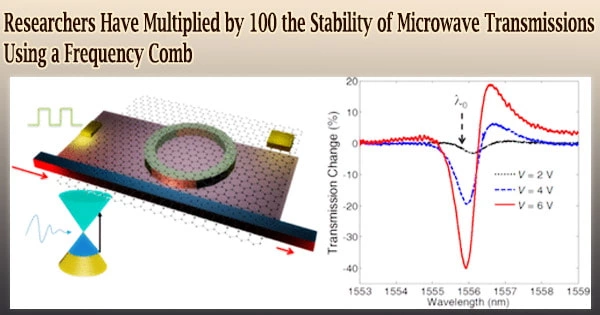Modern atomic clocks, cutting-edge light detectors, and a measurement device called a frequency comb have all been employed by researchers at the National Institute of Standards and Technology (NIST) to increase the stability of microwave transmissions by a factor of 100.
This represents a significant advancement in electronics, opening the door to more precise time transmission, better navigation, more dependable communications, and higher-resolution radar and astronomy imaging. A system or gadget operates more dependably when the microwave signal is improved throughout a certain time frame.
The work extends the excellent stability of the state-of-the-art optical frequency laboratory atomic clocks to microwave frequencies, which are currently utilized to calibrate electronics.
The NIST technology and methodologies indirectly transfer the signal stability of optical clocks to the microwave domain because electronic systems cannot directly count optical signals. The demonstration is covered in Science’s May 22, 2020 issue.
The researchers’ system employed frequency combs as gears to correctly translate the higher-frequency optical pulses into lower-frequency microwave signals, as well as the “ticking” of two ytterbium lattice clocks from NIST to produce light pulses.
Modern photodiodes transformed light pulses into electrical currents, which then produced a microwave signal at 10 gigahertz (GHz, or a billion cycles per second) that precisely tracked the ticking of the clocks with an error of just one part in a quintillion (1 followed by 18 zeros). This performance level is 100 times more stable than the finest microwave sources and on par with the performance of both optical clocks.
Years of research, including important contributions from NIST, have resulted in high-speed photodetectors that can now transfer optical clock stability to the microwave domain. The second major technical improvement was in the direct tracking of the microwaves with high precision, combined with lots of know-how in signal amplification.
Frank Quinlan
“Years of research, including important contributions from NIST, have resulted in high-speed photodetectors that can now transfer optical clock stability to the microwave domain,” lead researcher Frank Quinlan said. “The second major technical improvement was in the direct tracking of the microwaves with high precision, combined with lots of know-how in signal amplification.”
Microwaves have longer, slower cycles than optical waves, hence their forms differ. The researchers monitored the phase and precise timing of the waves as they were converted from steady optical waves to microwaves to make sure they were similar and had not been altered in relation to one another. Phase variations were monitored in the experiment with a resolution of just one-millionth of a cycle.
“This is a field where just doubling microwave stability can take years or decades to achieve,” group leader Chris Oates said. “A hundred times better is almost unfathomable.”
“Some components of the NIST system, such as the frequency combs and detectors, are ready to be used in field applications now,” Quinlan said.
However, NIST experts are still attempting to adapt cutting-edge optical clocks for portable systems. The 518 terahertz (trillion cycles per second) ytterbium clocks currently occupy enormous tables in tightly regulated laboratory environments.
Ultra-stable electronic signals may be used for a variety of purposes, such as the calibration of electronic clocks in the future that use quartz crystal oscillators as their power source.
This is a crucial factor to take into account when redefining the SI second, which is now based on the microwave frequencies absorbed by the cesium atoms in traditional clocks.
The international scientific community is anticipated to decide on a new time standard in the upcoming years based on optical frequencies that other elements, including ytterbium, absorb. Super-stable transmissions may also increase the dependability of wireless communication systems.
Imaging systems might become more sensitive thanks to optically produced electronic signals. Microwave noise currently limits radar sensitivity, especially for slow-moving objects, but it has the potential to be considerably increased.
In comparison to earlier designs, the new photodiodes developed by NIST and the University of Virginia convert optical impulses to microwave signals more reliably and with less noise. Additionally, signals from far-off optical clocks could be transmitted via microwaves for use in navigation and basic physics research.
The detection of microwave signals at receivers throughout the world and their combination to create images of objects is now the basis for astronomical imaging and relativistic geodesy, which calculates the gravitational shape of the Earth.
The network may be moved from Earth to space, improving image resolution and avoiding atmospheric distortions that shorten observation time. Remote calibration of these receivers could make this possible. Researchers could image far more objects if they had hours of observation time rather than just seconds.
















